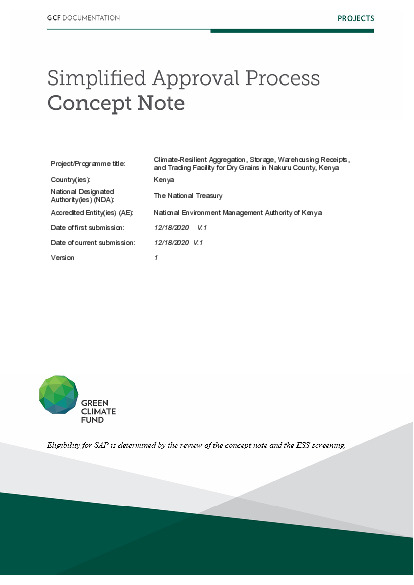Climate-Resilient Aggregation, Storage, Warehousing Receipts, and Trading Facility for Dry Grains in Nakuru County, Kenya

Climate-Resilient Aggregation, Storage, Warehousing Receipts, and Trading Facility for Dry Grains in Nakuru County, Kenya
In Kenya, smallholder farmers face several challenges among them, poor post harvest management of their produce. For grain farmers, losses during post harvest management is estimated to cause a loss of between 20 and 30% of their produce 1-5. Several studies have projected that climate change will exacerbate this challenge mainly as a result of increased average temperatures, greater rainfall variability (especially during harvest time), and more frequent extreme weather events 6-10. These factors are compounded by inadequate post-harvest handling practices, facilities, knowledge and infrastructure.
In addition to the increased losses of grains as a result on climate change, Post Harvest Losses (PHL) also increases the climate vulnerability of small holder farmes. Due to the limited farmlevel grain storage facilities, most farmers prefer selling their grains, shortly after harvest which leaves them with little reserves for use during drought years/seasons, exacerbating their climate vunerability. Furthermore, this practice floods the market with grains which inturn reduces their prices, negatively affecting farmers income and economic outlook, which exacerbates their climate vulnerability.
The intervention proposed in this project aims at reducing PHL for small holder grain farmers by providing them with proven low cost grain storage technologies such as hermetic bags and metal silos among others 1,11. Existing community storage facilities will also be enhanced to function as commodities exchange centers where warehousing receipt will be provided to participating farmers. These receipts will strengthen farmers access to credit through financing partners and facilitate the building of socio-economic resilience against climate shocks and stressors.